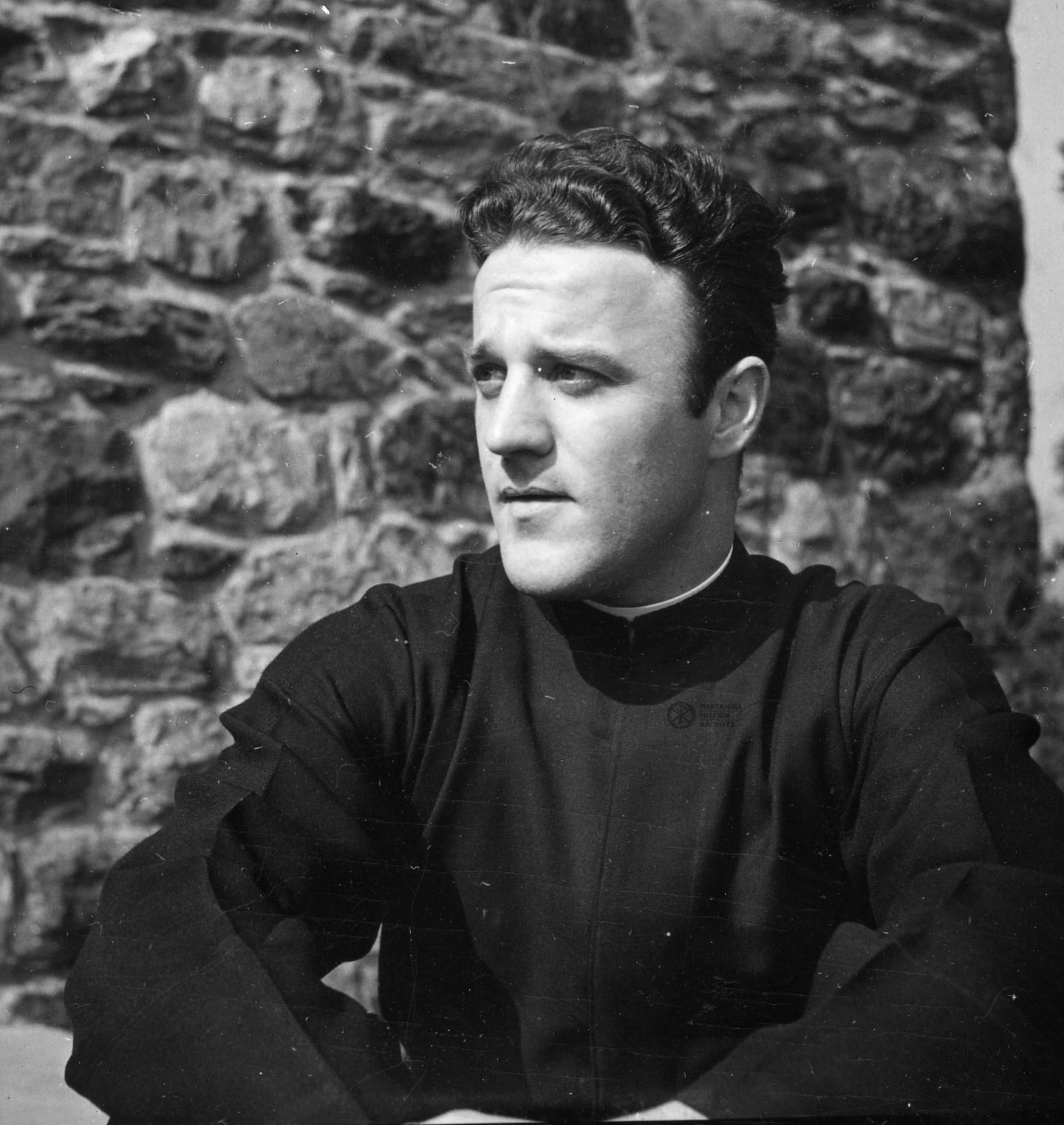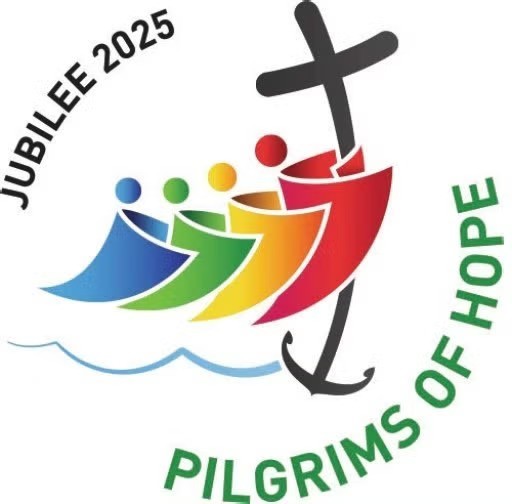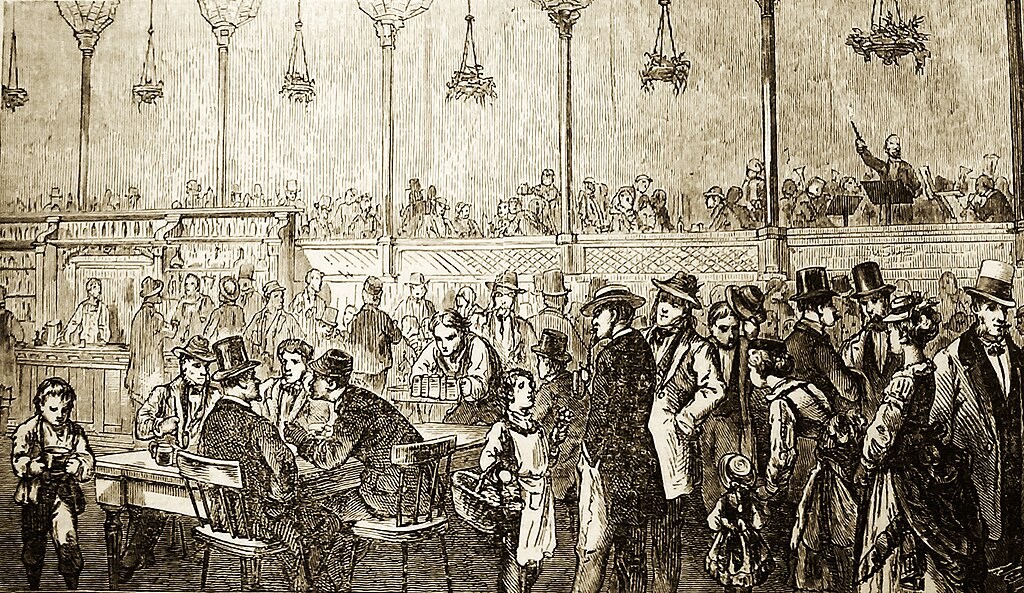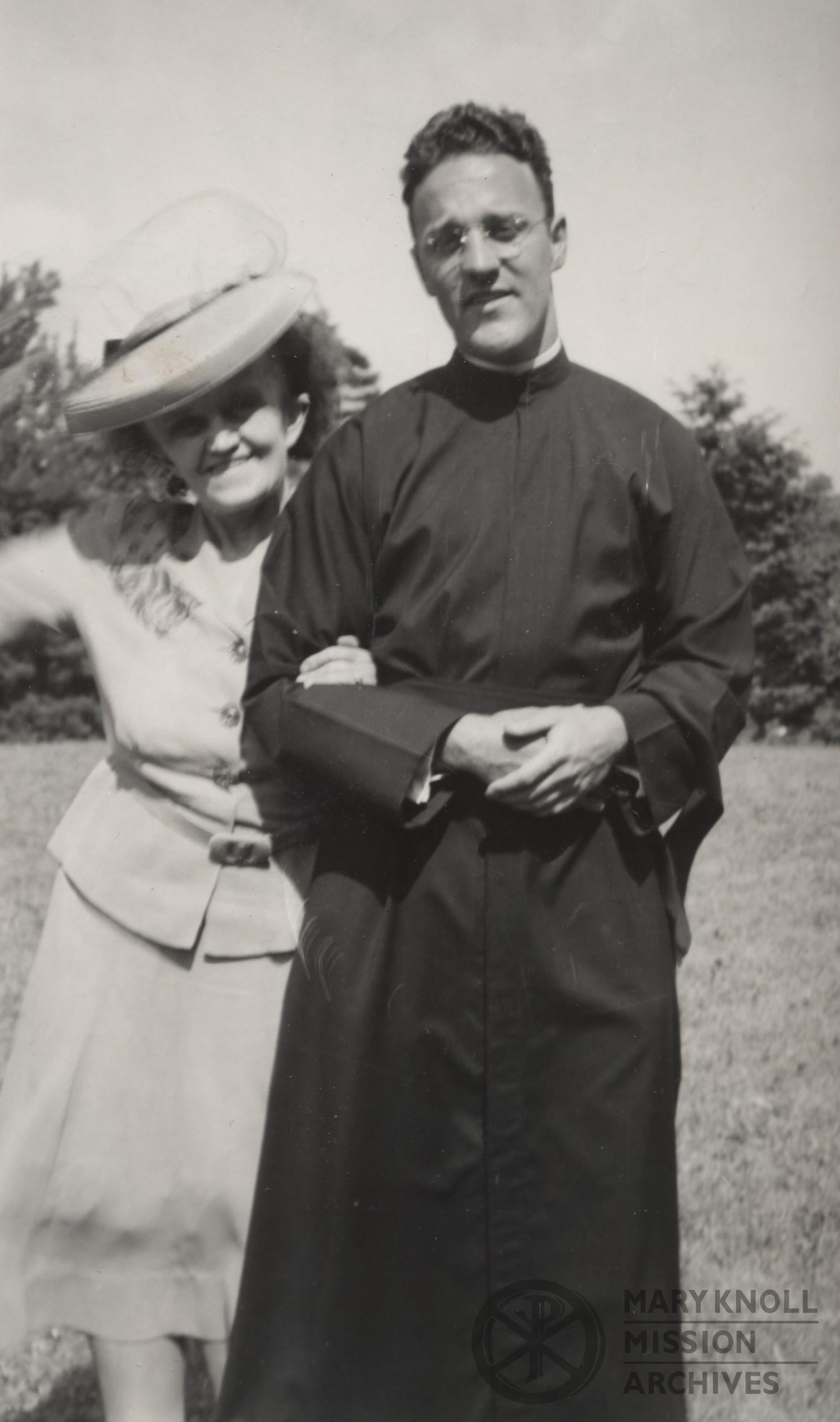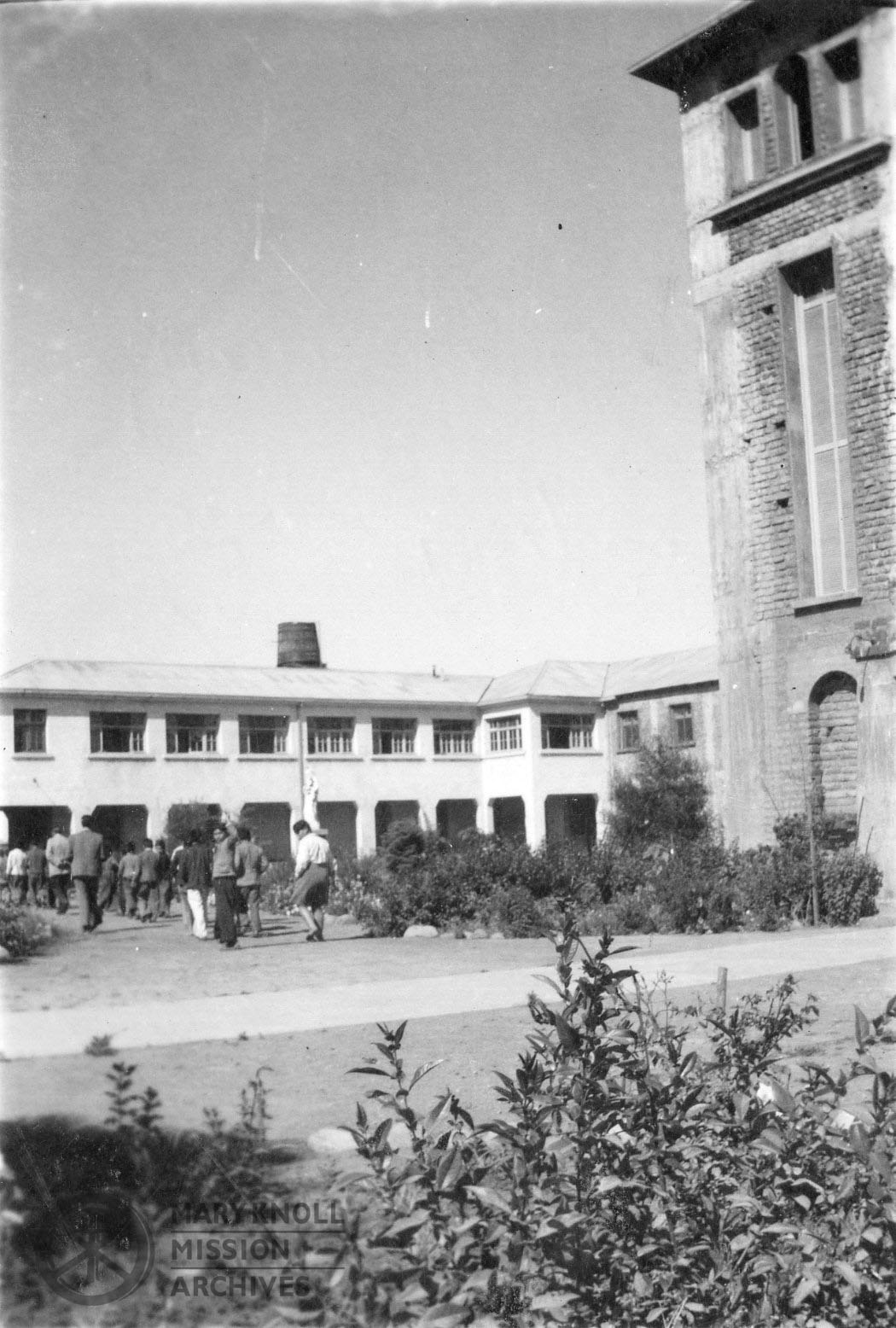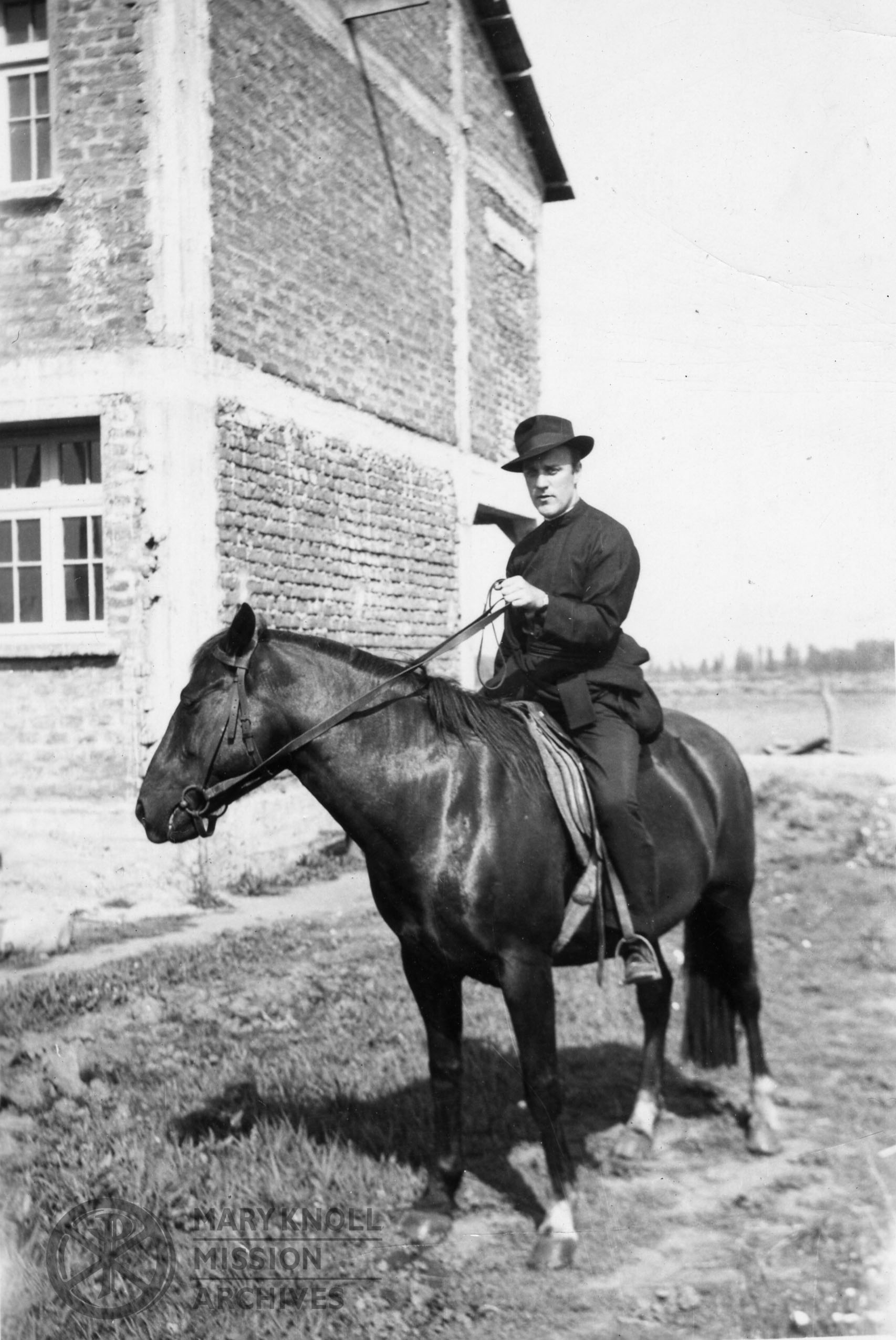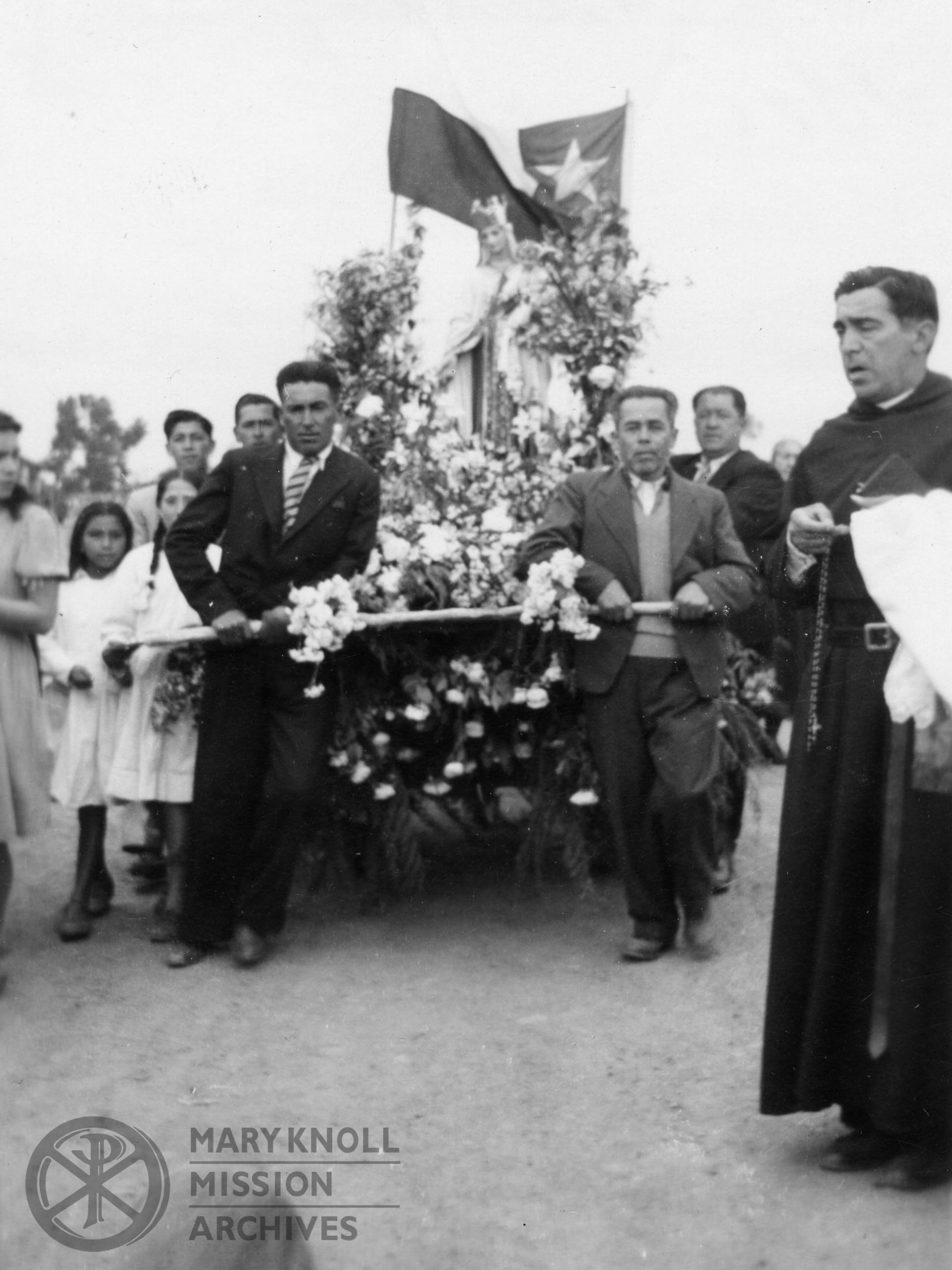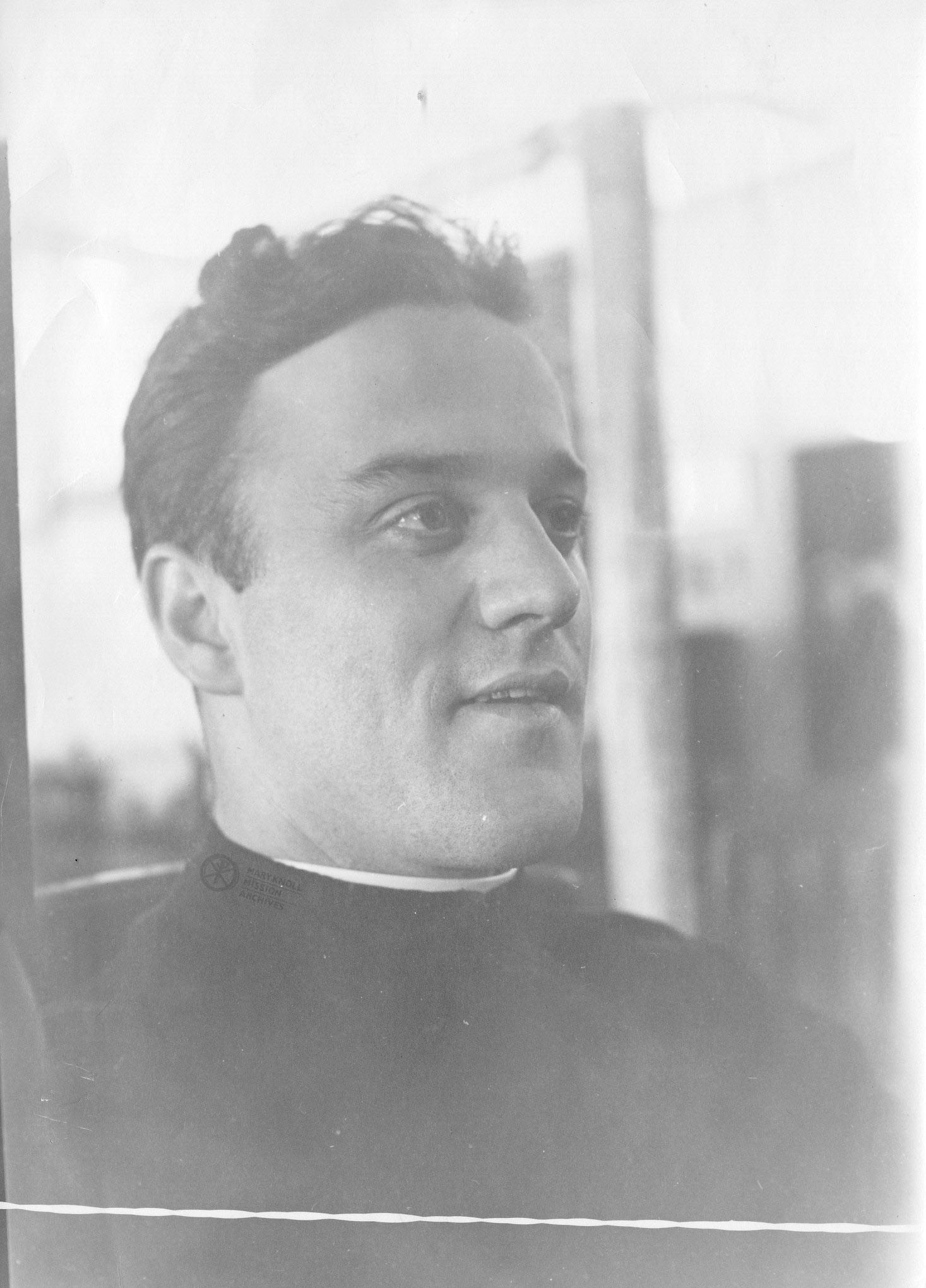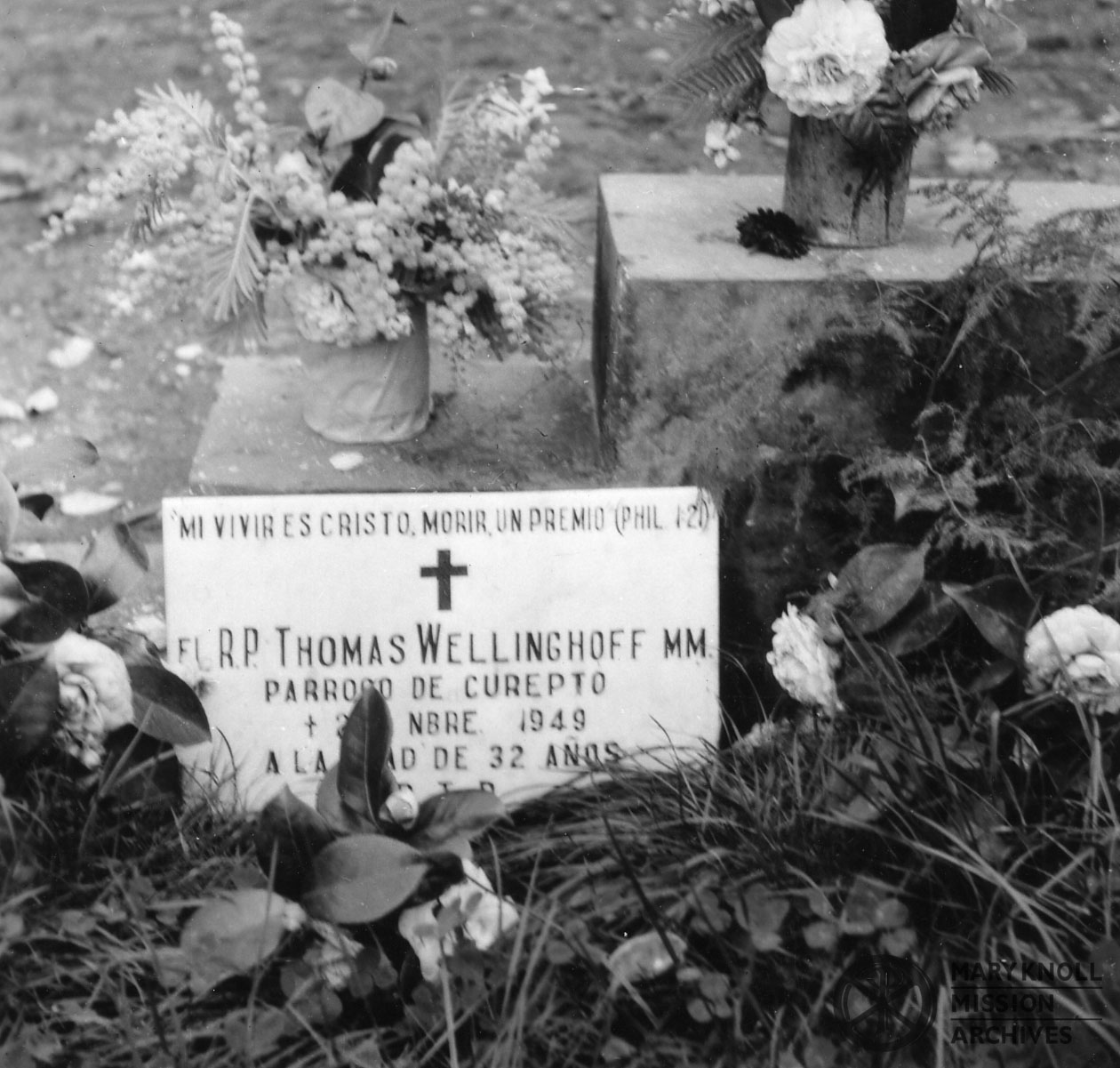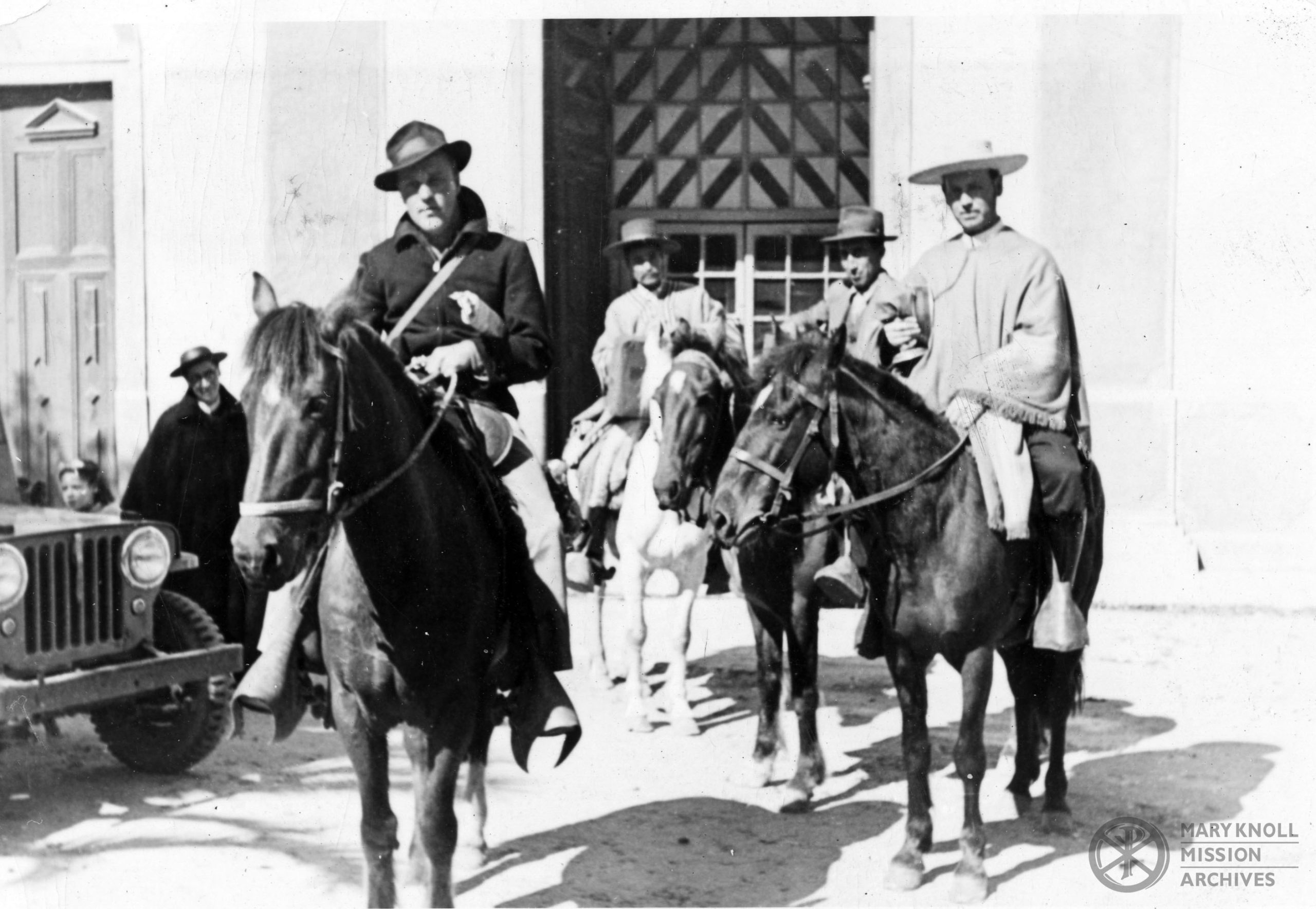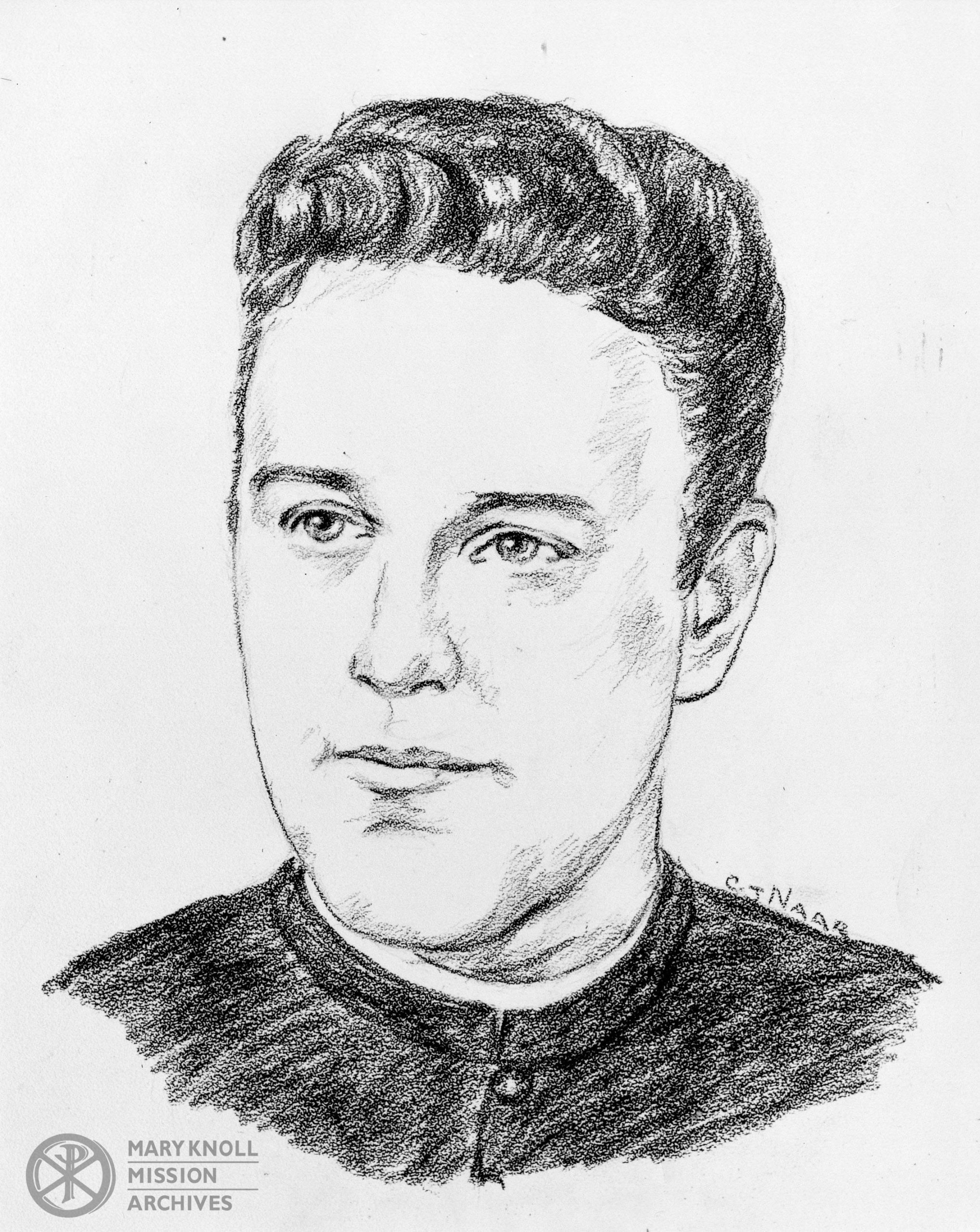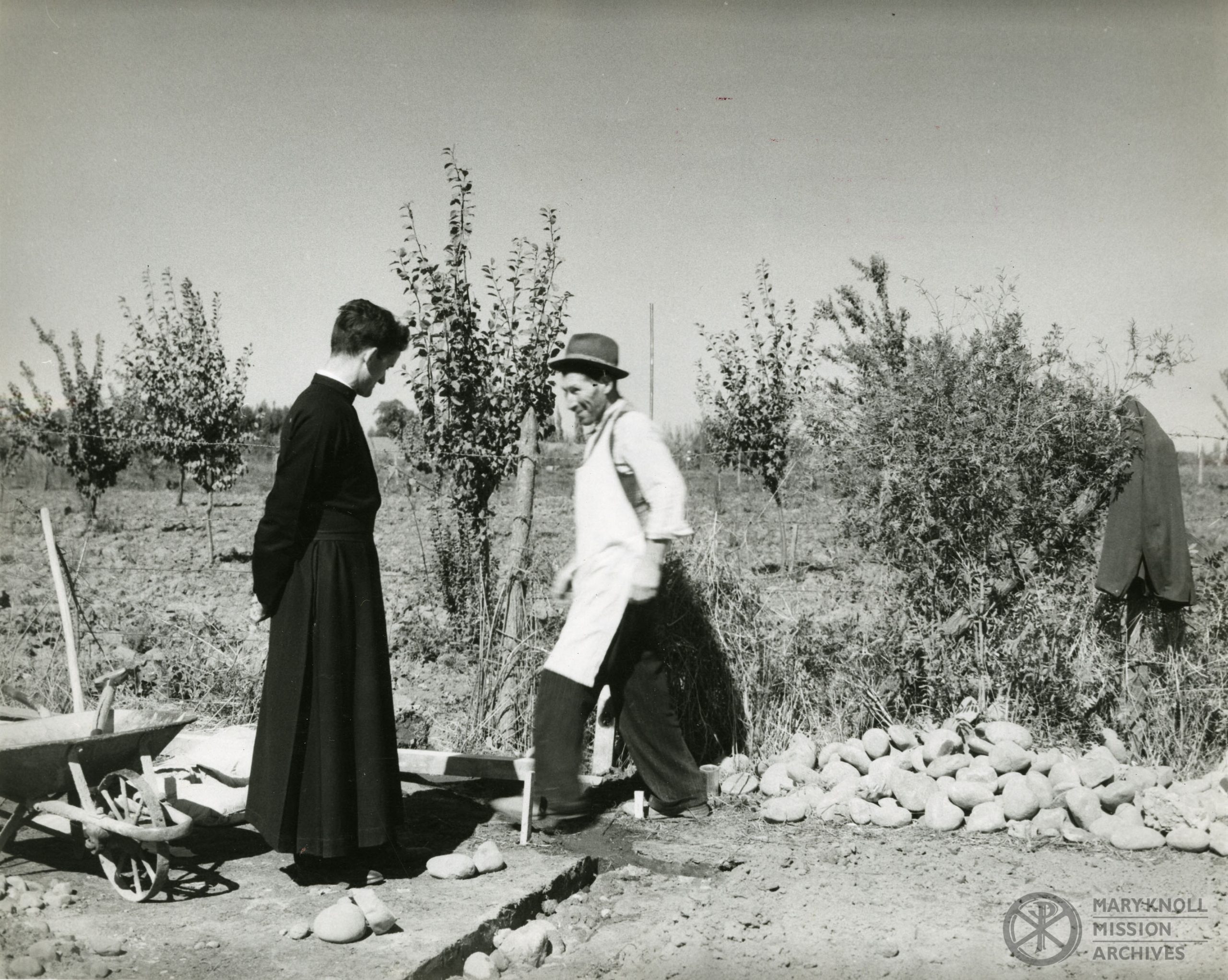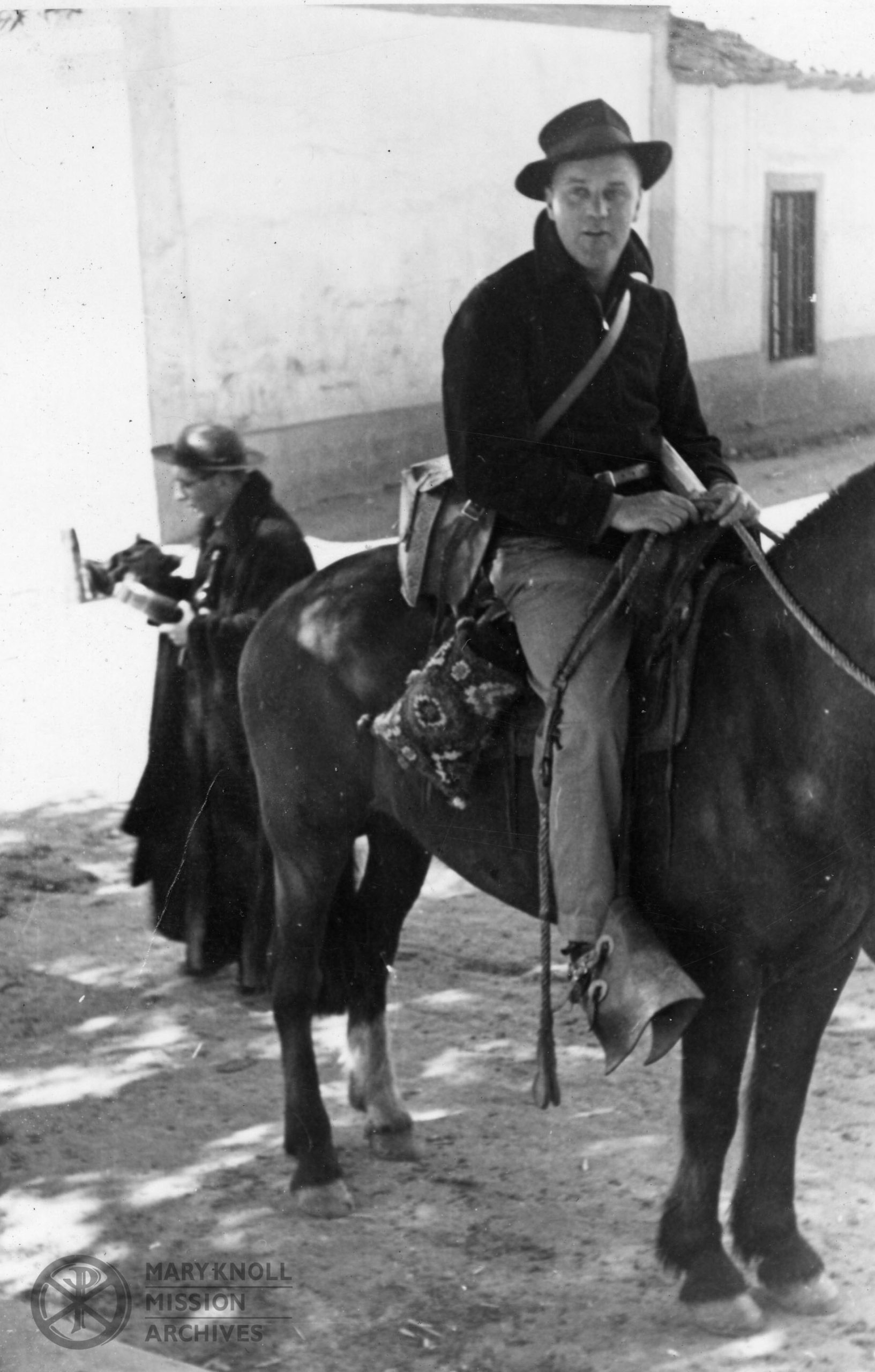Maryknoll Memoirs – A Work in Progress
If you’ve ever looked through the Biographies section on our website, you may have noticed that not all bios are equal. Some paint detailed portraits of the person’s life and mission work while others are more like a thumbnail sketch, leaving ample room for questions about the gaps. (See Father Thomas A. Barry, MM for a particularly short example.)
We don’t update or change these biographies because they are record transcriptions created by Maryknollers following an individual’s death. They have historic significance, even if they don’t tell the full story. When the Archives received a request about Fr. Thomas Barry’s life, the hard work and research used to recreate his life evolved into a blog post. It was written to celebrate his life and make his story more accessible to the public. This project evolved into the Maryknoll Memoirs series.
Maryknoll Memoirs:
- Fr. Thomas A. Barry: Life and Legacy in Japan
- Maryknoll Memoirs: Fr. John J. Massoth
- Maryknoll Memoirs: Sr. Marianna Akashi
- Maryknoll Memoirs: Bro. Gonzaga Chilutti
This series celebrates the lives of Maryknoll missioners whose biographies simply do not do them justice. Today, we celebrate the life of Fr. Thomas R. Wellinghoff during the Jubilee of the Poor. As stated by the United States Conference of Catholic Bishops (USCCB), “The Jubilee of the Poor is an invitation to embody the spirit of Jubilee, a time to recommit ourselves to uplifting and supporting the poor and ensuring that all people can live with dignity” (Jubilee of the poor). Let Fr. Wellinghoff’s story serve as a reminder to care for the most vulnerable members of our communities, and reinvigorate our ambitions for a more just world for all.
“Over the Rhine Saloon”, D.J. Kenney – Cincinnati Illustrated: A Pictorial Guide to Cincinnati and the Suburbs
Thomas R. Wellinghoff – The Early Years
Thomas Robert Wellinghoff was born on April 3, 1917 in Cincinnati, Ohio to Paul and Stella (Albers) Wellinghoff. He was the second of their seven children; five boys and two girls. Both sides of Thomas’ family had lived in Cincinnati for several generations, and had German ancestors who immigrated to Ohio during the 1800’s. Most likely, his ancestors were fleeing from the German Revolutions in 1848-1849, prior to the creation of a unified Germany.
Cincinnati has maintained a thriving German population since the 1850’s, including its own German neighborhood known as Over-the-Rhine. Thomas would have grown up surrounded by German American heritage. His family also would have been exposed to anti-Catholic rhetoric, and strong anti-German sentiment throughout their lives due to Germany’s role in World War I and World War II.
The Wellinghoff’s lived in the Price Hill neighborhood on the west side of Cincinnati. Thomas and his siblings went to school here, and he graduated from Elder High School. He felt called from a young age to enter the Priesthood and initially entered St. Gregory Seminary in 1934. He was only 17 years old at the time.
While his family may have anticipated him staying local and living in Cincinnati, Thomas had other plans. In 1937, he applied to transfer and was accepted into the Maryknoll Junior Seminary at the Venard, Clarks Summit, Pennsylvania. He passed his Novitiate period, then continued his education at the Maryknoll Seminary in Maryknoll, NY. He excelled in class, at sports, and socially among his peers at Maryknoll. His classmates described him as, “a good mixer, at home with anybody, anywhere.” His natural charisma served him well at home, and later as a Maryknoll Father. He was ordained Fr. Thomas R. Wellinghoff on June 11, 1944.
Colegio Gonzalo Correa Agricultural and Industrial School,
Living Quarters and Chapel Tower, May 1948
Mission Assignment: Chile
Fr. Wellinghoff had six weeks to settle his affairs and say goodbye to family and friends before going to his mission assignment in Chile. His first stop in Chile was language school, where Father and other new missioners would immerse themselves in learning Spanish. Once he completed his classes, he was sent on to his assignment with the Diocese of Talca.
Formal mission began for “Padre Tomás”, as he came to be known, in Talca parish as its curate. Here he supported the local parish priest as they worked together to serve the community. This also would have been a great learning experience for Padre Tomás while he integrated into Chilean society. He would have overseen births, marriages, and deaths in the community alongside his regularly scheduled Masses, home visits, and holidays.
After a year and a half in Talca, Fr. Wellinghoff was reassigned to the Colegio Gonzalo Correa Agricultural and Industrial School in Molina, Chile. The school educated local boys in the latest agricultural techniques and helped them learn trade skills, such as blacksmithing and carpentry. Many students came from poor families who could not afford tuition for a traditional school. Students learned to tend crops, flowers, vineyards, and an orchard. They also learned to raise chickens, rabbits, pigs, and cows on the school’s 10-acre farm. Padre Tomás was fondly remembered here for also teaching the boys sports during their recreation time.
Mission Assignment: Curepto, Chile
The life of a missioner is never dull. In 1947, Padre Tomás was assigned to Curepto. Unlike his previous locations in Talca and Molina, Curepto was a remote, rural town with its population spread out over the surrounding hills. Most of his parishioners were farmers, and Padre Tomás had to travel by horseback to visit them. (To my deep disappointment, I have not been able to discover the name of Father’s horse.)
Similar to his work in Talca, Fr. Wellinghoff was responsible for Masses, home visits, baptisms, marriages, deaths, etc. within the community. No task was too small for Padre Tomás when it came to improving the lives of Curepto’s citizens, however. He’s credited with riding for miles to bring medicine to the sick, making regular home visits to farmsteads outside town limits, blessing the fields of any farmer who asked, and making improvements to the local cemetery. Father went out of his way to include all members of the community, to make them feel seen and heard. Multiple accounts suggest that his care and respect for all was returned by the community at large.
Slowly by surely, Padre Tomás grew his plans for the future of Curepto. Families and individuals were returning to the Church along with new members for Sunday Mass. He began planning for a parochial school to improve local education for children. He hoped to raise funds and build a Chapel further from town so his rural parishioners would not have to travel so far. Local medical knowledge was limited, so Father would enroll in medical classes during his scheduled furlough in 1951.
Dreams Deferred
Padre Tomás was in good health and good spirits, until his heart attack on November 20, 1949. He was unable to be saved and died at 32 years old. Fr. Wellinghoff was the first Maryknoll missioner to die while missioned in Chile.
It was a horrible shock for the people of Curepto, and the Maryknoll Fathers and Brothers. Maryknoll missioners, Holy Cross Fathers, Precious Blood Fathers, and local clergy flocked from around the country to be at his funeral. Bp. Manuel Larraín Errazuriz, the Bishop of Talca, preached Fr. Wellinghoff’s funeral mass on November 22, 1949. Accounts of the funeral note that the church was overcrowded with mourners from the parish and the surrounding areas.
Fr. Wellinghoff’s casket was carefully brought from the church and up the hill to Curepto cemetery by his parishioners. Records suggest the funeral procession was massive. His body was buried in Curepto cemetery alongside members of his beloved community. Padre Tomás has remained here to this day and was believed to watch over the town.
“…people will never forget how you made them feel.” (Maya Angelou)
Years later, the community continued to celebrate the life of Padre Tomás and mourn his loss. We know from the accounts of Fr. John Moriarty, assigned to Curepto in 1951, that Father’s former parishioners frequently tended his grave and left fresh flowers daily. The most detailed accounts of Father’s posthumous influence come from the Maryknoll Sisters’ diaries in Curepto.
Everyone in the pueblo is talking about, and preparing for, the “dia de Padre Tomas”. It is traditional here to honor the memory of Father Thomas Wellinghoff, former pastor here, who died three years ago. The first year some thousand parishioners attended the Mass and procession to the cementery [sic] – and each year the custom is continued for the people have great love for their former pastor.”
“Three Maryknoll Fathers came out to Curepto to helpt [sic] the people here celebrate Father Wellinghoff’s anniversary… Immediately after Mass there was the procession up the long hill to the cemetery. Behind the cross-bearer, came one of the boys carrying the school banner, and behind him walked a sixth-grade boy carrying a lovely floral basket of white flowers. Then came all the school boys, each with a bouqet [sic] of white flowers, and behind came the crowd of parishioners, men and women, many of them carrying flowers or funeral wreaths. The people recited the Rosary enroute. The grave has been decorated the previous day by the lay teachers from the school – and only white flowers had been used. At the grave, the former mayor gave the eulogy…
The church was packed today with people in from the campo to celebrate the feast of All Saints. Strangely enough, it is today and not tomorrow on the feast of All Souls that the people venerate their dead… Before they left for home again, each one stopped to pay his respects at the grave of Padre Tomás – Father Thomas Wellinghoff, the young Maryknoller who died here four years ago. The people have a great love for him and attribute many favors received during the year to his intercession. When we stopped by there must have been 50 or 60 candles burning around his grave and burnt-out stubs gave evidence to the many that had been placed there earlier in the day.
Today is the sixth anniversary of the death of Father Thomas Wellinghoff, so after the last Mass the people all went up the hill in procession to their beloved “Padre Tomas’s” grave. When we arrived there one of the men of the town gave a nice talk recalling his interest in Catholic education and that we all owed it to Padre Tom’s [sic] to do all in our power to see to it that the children of Curepto are well instructed in their faith. The choir girls sang the Benedictus alternately with Father, and the school boys left their flowers on the grave. We presented a huge wreath of flowers in the name of the school too.
Portrait of Fr. Thomas R. Wellinghoff. Artwork attributed to C.J. Naar.
Farmland at Colegio Gonzalo Correa Agricultural and Industrial School, Molina, Chile.
Fr. Thomas R. Wellinghoff on horseback, Chile, c. 1940’s
Interested in learning more about Maryknoll?
You can contact the Archives at:
Maryknoll Mission Archives
PO Box 305, Maryknoll, New York 10545
Phone: 914-941-7636
Office hours: 8:30 am-4:00 pm Monday-Friday
Email: archives@maryknoll.org
Website: www.maryknollmissionarchives.org
References:
ABOUT USCCB. USCCB. (2025a). https://www.usccb.org/about
Cairns, M. (2023, March 27). Fr. Thomas A. Barry – life and legacy in Japan. Maryknoll Mission Archives. https://maryknollmissionarchives.org/fr-thomas-a-barry-life-and-legacy-in-japan/
Cairns, M. (2023, July 19). Maryknoll memoirs: Fr. John J. Massoth. Maryknoll Mission Archives. https://maryknollmissionarchives.org/maryknoll-memoirs-fr-john-j-massoth/
Cairns, M. (2024, March 6). Maryknoll Memoirs: Sr. Marianna Akashi. Maryknoll Mission Archives. https://maryknollmissionarchives.org/maryknoll-memoirs-sr-marianna-akashi/
Cairns, M. (2024, September 18). Maryknoll memoirs: Bro. Gonzaga Chilutti. Maryknoll Mission Archives. https://maryknollmissionarchives.org/maryknoll-memoirs-bro-gonzaga-chilutti/
Elder high school. Elder High School: A Private Male Preparatory School in Cincinnati, OH. (2025). https://www.elderhs.org/
Father John J. Moriarty, MM. Maryknoll Mission Archives. (2014, April 23). https://maryknollmissionarchives.org/deceased-fathers-bro/father-john-j-moriarty-mm/
Father Thomas A. Barry, MM. Maryknoll Mission Archives. (2014, April 16). https://maryknollmissionarchives.org/deceased-fathers-bro/father-thomas-a-barry-mm/
Father Thomas R. Wellinghoff, MM. Maryknoll Mission Archives. (2014, April 16). https://maryknollmissionarchives.org/deceased-fathers-bro/father-thomas-r-wellinghoff-mm/
Formation/Education House Publications Collection, 1918-1970. Maryknoll Mission Archives. (2025). https://maryknollmissionarchives.libraryhost.com/index.php?p=collections%2Ffindingaid&id=86&rootcontentid=45914&q=venard#id45928
German 1830’s – 1950’s. Cincinnati: A City of Immigrants. (2005). http://www.cincinnati-cityofimmigrants.com/german/
Jubilee 2025 – Pilgrims of Hope. USCCB. (2025). https://www.usccb.org/jubilee2025
Jubilee of the poor USCCB Resource Packet (English). USCCB. (2025). https://www.usccb.org/resources/jubilee-poor-usccb-resource-packet-english
Maryknoll Fathers & Brothers. (n.d.). Mission diaries, 1912-1969. Maryknoll Mission Archives. https://maryknollmissionarchives.libraryhost.com/index.php?p=collections%2Fcontrolcard&id=1&q=diaries
Maryknoll Sisters. (n.d.). Mission diaries, 1912-1968. Maryknoll Mission Archives. https://maryknollmissionarchives.libraryhost.com/index.php?p=collections%2Ffindingaid&id=4&q=diaries&rootcontentid=234527#id234527
Molineaux, D. J., & Ress, M. J. (1993). Maryknoll in Chile: The first fifty years. Mosquito Editores.
Sconning. (2025, July 30). A quick trip. Maryknoll Mission Archives. https://maryknollmissionarchives.org/a-quick-trip/
Tpolasek. (2024, January 24). Chinese characters at the venard. Archives. https://maryknollmissionarchives.org/chinese-characters-at-the-venard/
Wikimedia Foundation. (2023, December 31). Curepto. Wikipedia. https://en.wikipedia.org/wiki/Curepto
Wikimedia Foundation. (2025, January 7). Price Hill, Cincinnati. Wikipedia. https://en.wikipedia.org/wiki/Price_Hill,_Cincinnati
Wikimedia Foundation. (2025, June 24). History of over-the-rhine. Wikipedia. https://en.wikipedia.org/wiki/History_of_Over-the-Rhine#:~:text=At%20the%20turn%20of%20the,the%20city’s%20growing%20business%20district.
Wikimedia Foundation. (2025, September 30). Saint Gregory Seminary. Wikipedia. https://en.wikipedia.org/wiki/Saint_Gregory_Seminary
Wikimedia Foundation. (2025, October 5). Curate. Wikipedia. https://en.wikipedia.org/wiki/Curate
Wikimedia Foundation. (2025, October 7). German revolutions of 1848–1849. Wikipedia. https://en.wikipedia.org/wiki/German_revolutions_of_1848%E2%80%931849

